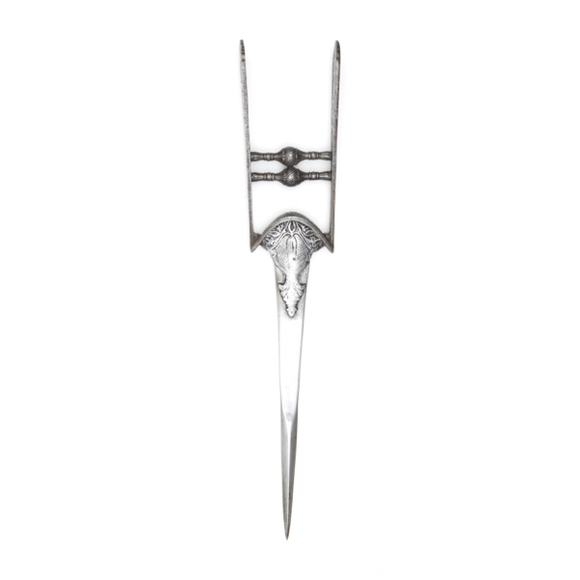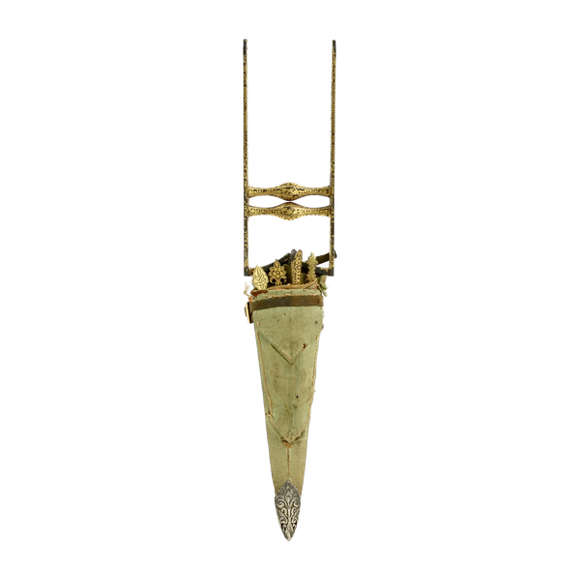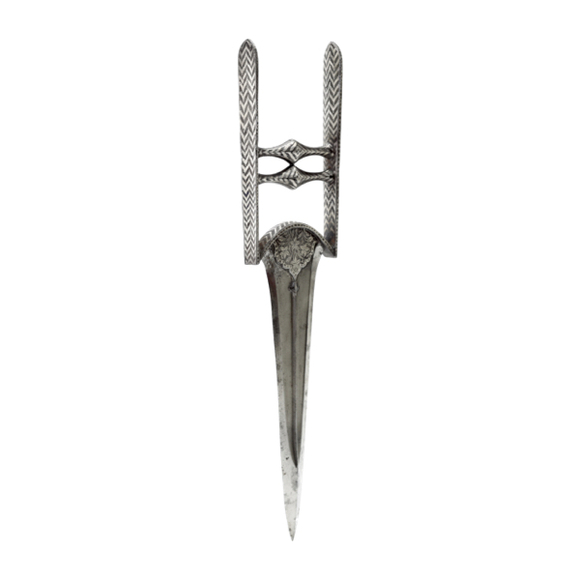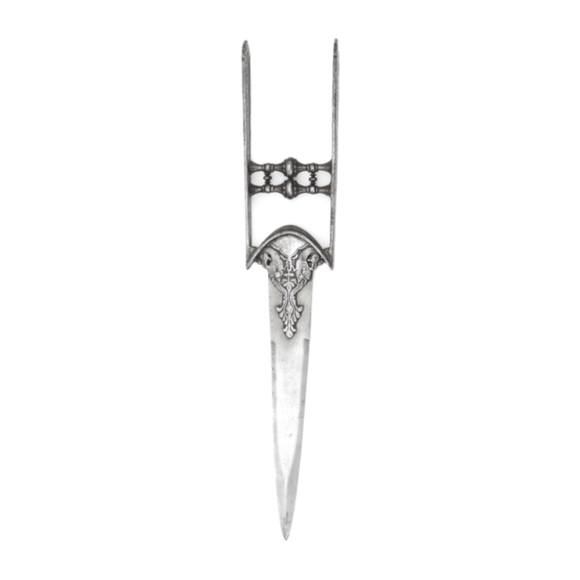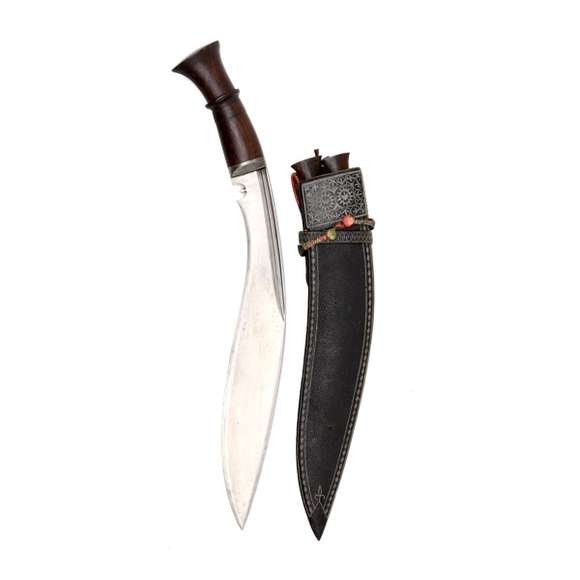The blade with an extremely thick point on a very thin blade.

Sheathed 41.4 cm
Dagger 39.5 cm
19.9 cm each
Base 5.5 mm
Tips 6.5 mm
Pair base 54.5 mm
Tips 29 cm apart
423 grams
Hilt-blade junction
Katar: steel
Scabbard: wood, leather, brass, thread
Southern Ulwar or Bundelkhand state
Circa 1800
Introduction
Indian push daggers are generally called katar by collectors today, but when going back to their earliest mention in the literature of the 16th century, the commonly used name was jamdhar.1
The Ain-i-Akbari or "Administration of Akbar" of circa 1590 describes a number of push daggers, among which those with two pounds called jamdhar doulicaneh (two pointed dagger) and jamdhar sehlicaneh (three pointed dagger).2

Illustration of daggers in the Ain-i Akbari.
Notes
1. Abu'l Fazl; Ain-i-Akbari (Persian: آئینِ اکبری) or the "Administration of Akbar". Circa 1590. And: Bāburnāma (بابر نامہ;) literally: "History of Babur" or "Letters of Babur"; the memoirs of Ẓahīr-ud-Dīn Muhammad Bābur (1483–1530), founder of the Mughal Empire and a great-great-great-grandson of Timur. Translated to Persian by Abdul Rahīm, (1589–90).
2. Abu'l Fazl; Ain-i-Akbari.
This example
A double-bladed katar or jamdhar doulicaneh with two blades with sunken panels, in which stylized pine trees appear in raised relief. They are so abstract in this case that one should really know that they are to see it. The blades sit on a chevron-shaped base, with narrow sidebars with small protrusions at their ends.
The characteristic handlebars are three bars that go through the sidebars and are riveted on the outside, resulting in three protrusions on either side of the sidebars.
Comparable examples
Two examples with similar hilts are in the Royal Collection Trust and are said to have been presented by "the Jagirdar of Alipura, Bundelkhand". The first, accession number RCIN 11334 has five handle bars and a single blade while RCIN 37476 has seven handlebars and three blades.
Another example with curved blade can be found in the Royal Armories in Leeds, accession number: XXVID.97 It is said to be from Gwalior, a town with a strategic fortress at the edge of Bundelkhand some 250 km northwest of Alipura.
Several katar with a similar hilt design were published in Nordlunde, Jens: A Passion for Indian Arms; a Private Collection. Catalog number 112 is of special interest, as it bears an inscription dating it to 1803-1804 and attributing it to Bakthwar Singh, the second ruler of Ulwar.
Scabbard
The katar comes in a wooden scabbard with a black, fine-grained bookbinder's grade leather covering and two pierced brass scabbard endpieces. Some damage and losses to wood and leather at the scabbard mouth.
We have another katar in our current collection that came with this piece, and is in a scabbard of identical materials, style and workmanship. Curiously, while the scabbard type is typically Northern, the other katar is decisively Southern and must have gotten this scabbard when it entered service in the North.

This katar (right) compared to the other katar in our collection.
Both pieces came from the same source and have probably been together for a long time.
Because I like to keep both pieces together, I can offer them both as a package for €2600,-.







Of a style often associated with Tanjore, the seat of the Vijayanagara empire.
An understated, elegant khukuri of substantial proportions with fine layered blade.

